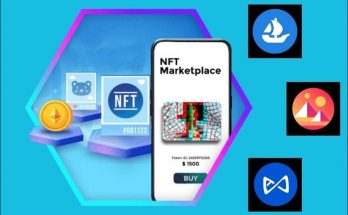The basic logic of Metaverse can be explained simply as follows: The aim is to transform everything that resides on the 2-dimensional internet or that can be digitized in our lives into 3D and transfer it to a digital universe.
Mark Zuckerberg, in his one-hour-long speech at Facebook Connect 2021, drew a future like this:[5] For example, if you were to watch our YouTube video above, you would interact with that video in 2 dimensions. A video would play on your screen and you would watch it from the outside. But if this video was in the “YouTube metaverse” or the YouTube segment of the Metaverse, we would be telling you about it on a special digital stage in that Universe, and you would be right here with us, from your home, thanks to your virtual reality glasses.
You would be able to interact digitally with us and other viewers. At the end of the video, you would be able to ask us a question directly, and if you got stuck, instead of writing a comment and waiting, you would be able to chat as if the other people listening to the presentation were in front of you. But for example, if we wanted to, we could have this Q&A session in a very special cafe designed within a digital replica of Mars.
That is, the metaverse or sub-metaverses do not have to be a true replica of the Earth; It can also consist of fantasy worlds or artistic designs: Different planets, imaginary worlds, Jurassic Park, The Matrix, whatever you can think of… We can liken it to people using virtual backgrounds in Zoom meetings: In the Metaverse, that background will be “space” and people will they will be able to be in that space with their avatars, interact with the space and each other physically, see each other as if they are facing each other; They will be able to distinguish gestures, facial expressions and facial expressions.
As you can see, thanks to the metaverse, we will move the internet out of a 2D screen and into a 3D digital universe. In fact, the next step of this will be to enrich the visual, auditory, olfactory and tactile processes, namely the sensory experience, with Neuralink-style brain chips, which we explained in our previous articles; because interactions can be sent as direct signals to your brain.
As you can see, the metaverse will be quite different from today’s restrictive virtual reality experiences. Unlike today’s virtual reality, the metaverse will be a huge collaborative sandbox that combines virtual reality and augmented reality, allowing avatars to seamlessly switch between virtual spaces on the platform, where hundreds of millions of participants can simultaneously engage and physically interact in three dimensions.
In this virtual universe, people can perform many actions that they can actually do; They can work, study, have a job, shop, do sports, play games, watch or read, socialize by participating in various activities, create their own adventures and worlds, participate in fictional universes such as Star Wars.
To give a simple example, people living in different parts of the world can come together to have fun or work on projects in this virtual universe that hosts various virtual worlds. Unlike the internet, the metaverse allows people to have a three-dimensional physical interaction with each other in a virtual universe. With the Metaverse, people can physically interact with each other whenever they want, as if they were in the same place, even though they are far away.
So the metaverse; It is a spatial internet that can be experienced in three dimensions with new connections, devices and technologies at any place and time. At the same time, metaverse can also be expressed as experiencing a game in three dimensions, without the need for devices such as a screen and keyboard. For example, imagine stepping into three-dimensional video games such as Minecraft, Roblox, PUBG and Fortnite and physically experiencing that virtual world as if it were real. Simply put, the metaverse is an advanced internet in which you exist rather than look.
Hits: 106



